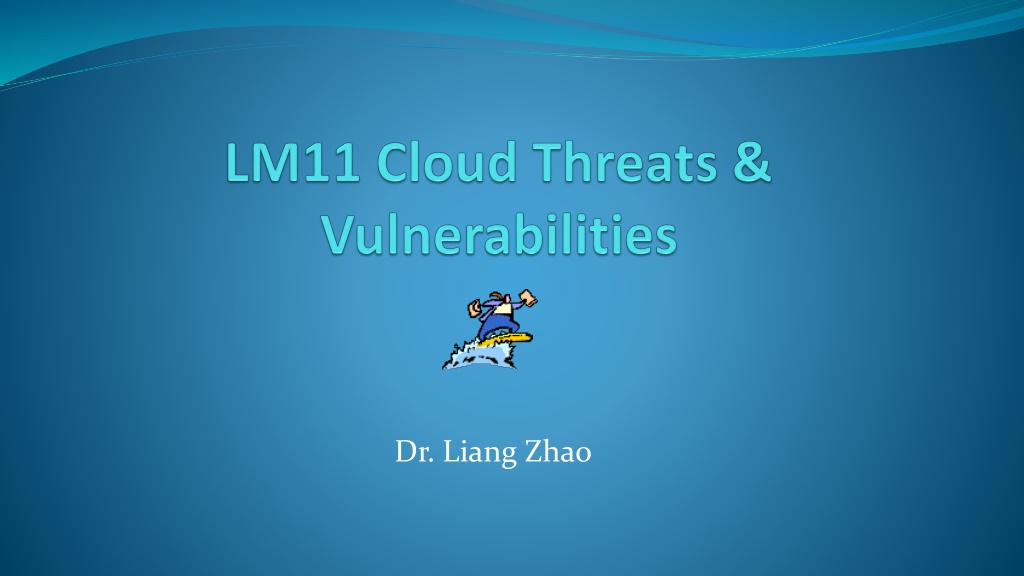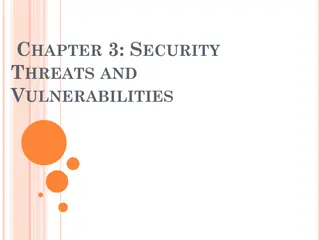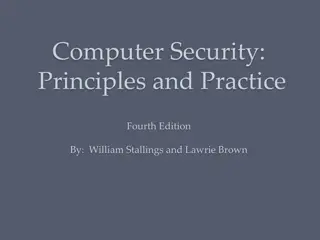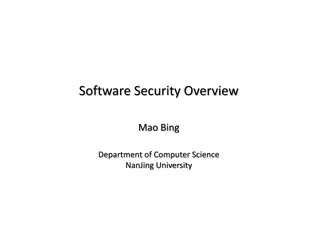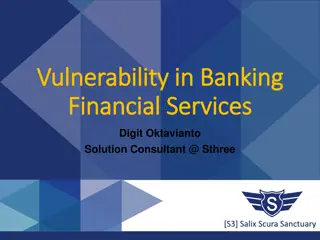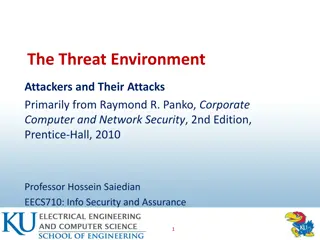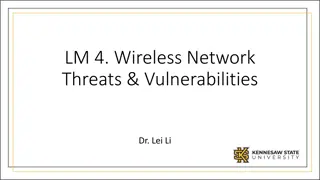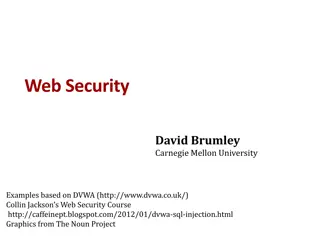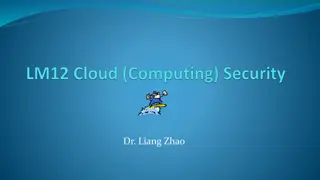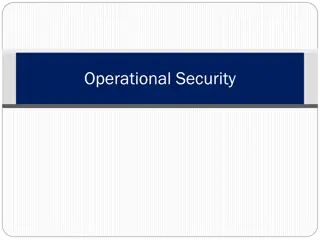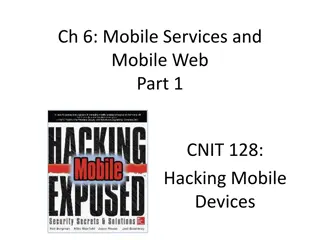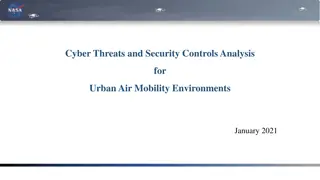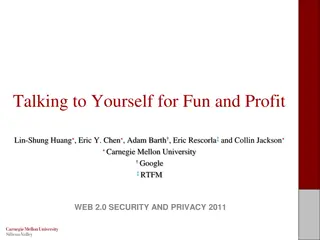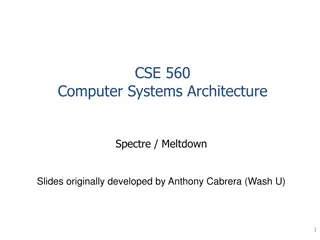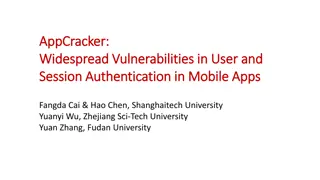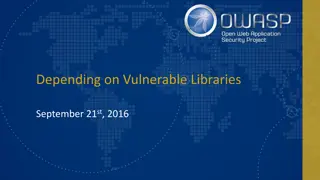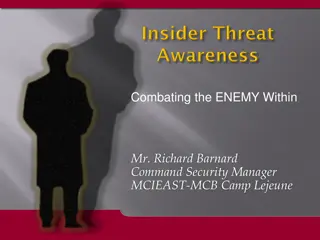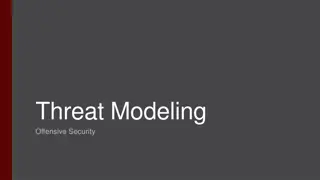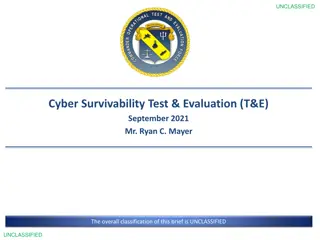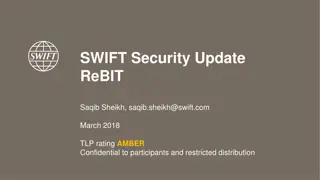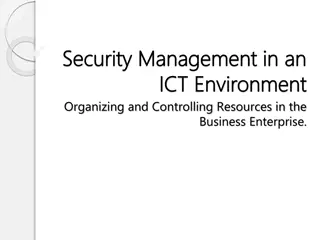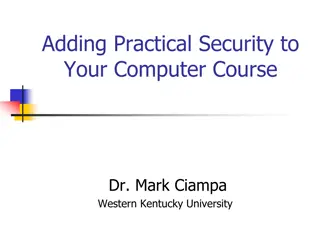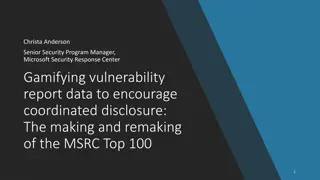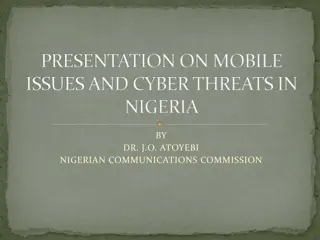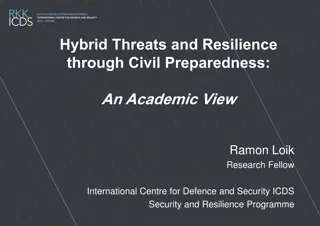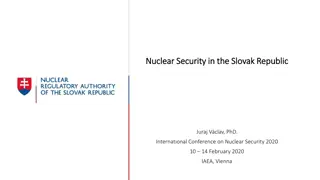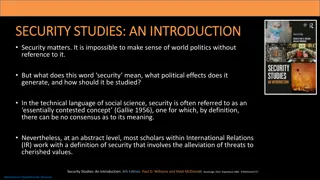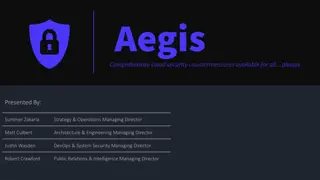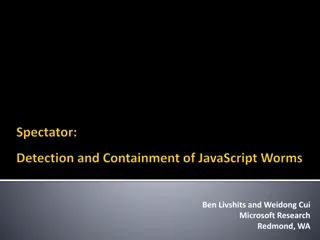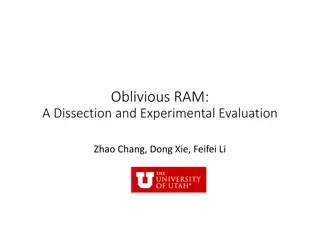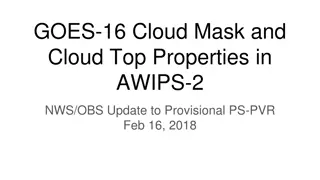Understanding Cloud Security Threats and Vulnerabilities
Explore the world of cloud security through the eyes of Dr. Liang Zhao, focusing on mobile security, WLAN security, and cloud threats. Learn about threat modeling, mitigating cloud vulnerabilities, and common threats such as data leakage, insecure interfaces, and more. Discover practical threat analysis techniques to identify system vulnerabilities and develop risk mitigation strategies tailored to specific system architectures.
Download Presentation

Please find below an Image/Link to download the presentation.
The content on the website is provided AS IS for your information and personal use only. It may not be sold, licensed, or shared on other websites without obtaining consent from the author. Download presentation by click this link. If you encounter any issues during the download, it is possible that the publisher has removed the file from their server.
E N D
Presentation Transcript
Road Map Mobile Security Security Auditing & Risk Analysis WLAN Security Introduction Mobile Network Overview (optional) Evolution of Wireless Network WLAN Overview Evolution of Cloud Cellular Network Security (optional) Infor. Security Essentials WLAN Threats & Vulnerabilities Confidentiality and Integrity of Cloud Mobile Security Threats WLAN Security Cloud Threats & Vulnerabilities WLAN Security Tools Mobile Devices Security (optional) Cloud Security 2
Outline Threats & Vulnerabilities in moving to the cloud Threat modeling Mitigating Cloud Vulnerabilities 3
Threats & Vulnerabilities Threat is harm or unauthorized access that might occur due to vulnerability and destroy organization assets, organization operations or system information Vulnerability is any weakness in information system, system security procedures, internal controls or implementation that could be exploited or triggered by a threat resources The most significant threats that are related to the on-demand nature of cloud 4
Threats Data lose or leakage (T1) Account or service hijacking (T2) Insecure interface (T3) Denial of service (T4) Malicious insider (T5) Data breaches (T6) Abuse of cloud services (T7) Insufficient due diligence (T8) Insecure VM migration (T9) 5
Vulnerabilities Session riding (V1) Virtual machine escape (V2) Obsolete cryptography (V3) Unauthorized access to management interface (V4) Internet protocol (V5) Data recovery (V6) Metering and billing (V7) Vendor lock-in (V8) 6
Threat modeling Practical threat analysis: The Practical Threat Analysis (PTA) proposed a model to identify system vulnerabilities, map system assets, assess the risk of the threats and define an effective risk mitigation plan for a specific system architecture, functionality and configuration Identifying assets and their financial values is done in the first step. The second step represents system s vulnerabilities on the base of architecture, functionality and different type of users. The effect of cost is calculated on the base of implementation cost. In the last step, threat scenario has been built to identify various threat and level of damage. 7
Threat modeling Threat modeling in pervasive computing paradigm: By cloud computing as an on-demand service, each user has multi identifies for different security domain so implementing security schema is a big challenge for cloud computing. This model presented as a new threat modeling to incorporate the problem of pervasive computing environment In the first step all user s roles need to be established with their service usage and authentication mechanisms. Identifying security domains that is mentioned in step two, presents the way that user interacts with applications inside the domain. Various type of user same as authorized user, admin and unregistered user have different trust levels. Identifying trust level in the third level, assists user to access the resources depending upon its trust level 9
Threat modeling In the next step, all vulnerabilities need to be detected. Known vulnerabilities can be eliminated and unknown vulnerabilities should be considered to protect system from harm attacks. Risk evaluation as a fourth step, presents fair idea to avoid computing environment from threats. Threats have been qualified on the base of cost expectancy that is involved restoration and replacement costs. In the last step, new vulnerabilities and threats have been identified and post them to forth step for keeping system secure. 10
Mitigating Cloud Vulnerabilities Misconfiguration the most prevalent cloud vulnerability and can be exploited to access cloud data and services. For organizations to enforce least privilege, administrators should: Use cloud service policies to prevent users from sharing data publicly without a mission-justified role; Use cloud or third-party tools to detect misconfigurations in cloud service policies; Audit access logs with automated tools to identify overly-exposed data; Restrict sensitive data to approved storage and use Data Loss Prevention solutions to enforce these restrictions. 13
Mitigating Cloud Vulnerabilities Poor Access Control occurs when cloud resources use weak authentication/authorization methods or include vulnerabilities that bypass these methods. Poor access control can be mitigated by enforcing strong authentication and authorization protocols. Use multi-factor authentication with strong factors and require regular re- authentication; Use automated tools to audit access logs for security concerns; Where possible, enforce multi-factor authentication for password resets; Do not include API keys in software version control systems where they can be unintentionally leaked. 14
Mitigating Cloud Vulnerabilities Shared Tenancy Vulnerabilities Adversaries who are able to determine the software or hardware used in a cloud architecture could take advantage of vulnerabilities to elevate privileges in the cloud. Vulnerabilities in cloud hypervisors (i.e., the software/hardware that enables virtualization) or container platforms are especially severe due to the critical role these technologies play in securing cloud architectures and isolating customer workloads. 15
Mitigating Cloud Vulnerabilities Mitigations for shared tenancy vulnerabilities involve separating organizational resources from other cloud tenants using mechanisms provided by the Cloud Service Provider (CSP) Enforce encryption of data at rest and in transit with strong encryption methods and properly configured, managed and monitored key management systems; For especially sensitive workloads, use dedicated, whole-unit, or bare-metal instances, reducing the risk of an adversary collocating and exploiting a hypervisor vulnerability to gain access to your resources; Select cloud offerings that have had critical components evaluated against National Information Assurance Partnership (NIAP) Protection Profiles (PPs), particularly hypervisors that have been evaluated against the NIAP Server Virtualization PP. 16
References See the references uploaded in LM11. Threat Modeling Approaches for Securing Cloud Computing Mitigating Cloud Vulnerabilities 17
